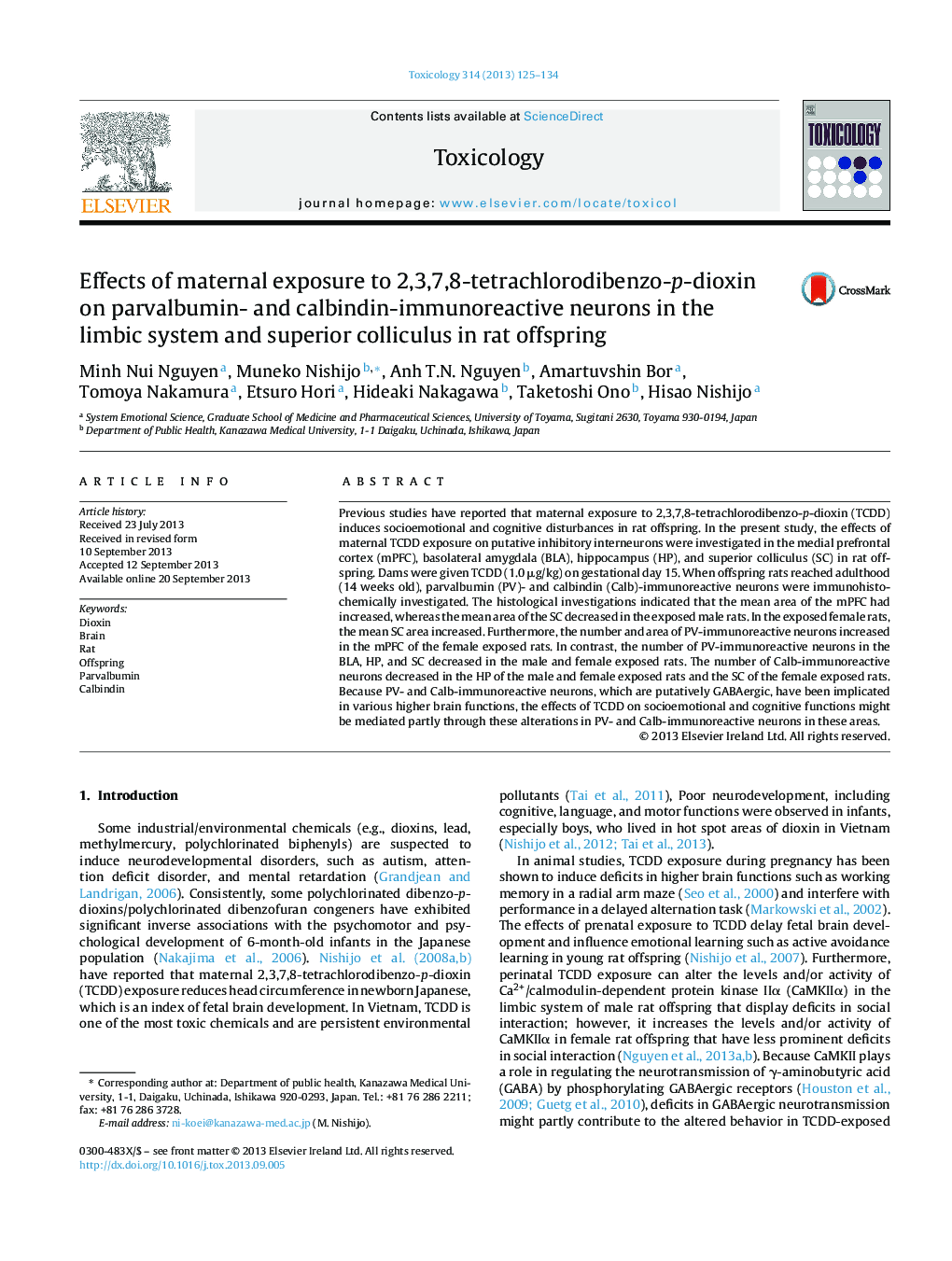| Article ID | Journal | Published Year | Pages | File Type |
|---|---|---|---|---|
| 5859323 | Toxicology | 2013 | 10 Pages |
Abstract
Previous studies have reported that maternal exposure to 2,3,7,8-tetrachlorodibenzo-p-dioxin (TCDD) induces socioemotional and cognitive disturbances in rat offspring. In the present study, the effects of maternal TCDD exposure on putative inhibitory interneurons were investigated in the medial prefrontal cortex (mPFC), basolateral amygdala (BLA), hippocampus (HP), and superior colliculus (SC) in rat offspring. Dams were given TCDD (1.0 μg/kg) on gestational day 15. When offspring rats reached adulthood (14 weeks old), parvalbumin (PV)- and calbindin (Calb)-immunoreactive neurons were immunohistochemically investigated. The histological investigations indicated that the mean area of the mPFC had increased, whereas the mean area of the SC decreased in the exposed male rats. In the exposed female rats, the mean SC area increased. Furthermore, the number and area of PV-immunoreactive neurons increased in the mPFC of the female exposed rats. In contrast, the number of PV-immunoreactive neurons in the BLA, HP, and SC decreased in the male and female exposed rats. The number of Calb-immunoreactive neurons decreased in the HP of the male and female exposed rats and the SC of the female exposed rats. Because PV- and Calb-immunoreactive neurons, which are putatively GABAergic, have been implicated in various higher brain functions, the effects of TCDD on socioemotional and cognitive functions might be mediated partly through these alterations in PV- and Calb-immunoreactive neurons in these areas.
Related Topics
Life Sciences
Environmental Science
Health, Toxicology and Mutagenesis
Authors
Minh Nui Nguyen, Muneko Nishijo, Anh T.N. Nguyen, Amartuvshin Bor, Tomoya Nakamura, Etsuro Hori, Hideaki Nakagawa, Taketoshi Ono, Hisao Nishijo,
